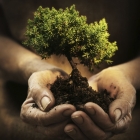-
 +21 +1
+21 +1Rivers Reborn: Alewives Continue to Make a Recovery in the Penobscot Watershed in Maine
Alewife fish populations are continuing to journey back home to Maine's Penobscot River thanks to the Infrastructure Investment and Jobs Act which is helping to reconnect and restore fish passages.
-
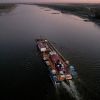 +30 +1
+30 +1Dry states taking Mississippi River water isn't a new idea. But some mayors want to kill it
Diverting Mississippi River water to states struggling with water scarcity isn't a new idea. And many experts have always said it's a long shot that isn't practical and wouldn't be remotely cost-effective.
-
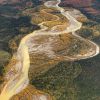 +22 +1
+22 +1Dozens of once crystal-clear streams and rivers in Arctic Alaska are now running bright orange and cloudy and in some cases, acidic
This otherwise undeveloped landscape now looks as if an industrial mine has been in operation for decades, and scientists want to know why.
-
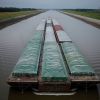 +8 +1
+8 +1Mississippi River levels are dropping too low for barges to float
The Mississippi River is flowing at its lowest level in at least a decade, and until rain relieves a worsening drought in the region, it’s becoming increasingly difficult to maintain water levels high enough to carry critical exports from the nation’s bread basket.
-
 +12 +1
+12 +1How we drained California dry
The wind finally blew the other way last night and kicked out the smoke from the burning Sierra. Down here in the flatland of California, we used to regard the granite mountain as a place apart, our getaway. But the distance is no more. With all those dead pine trees in thrall to wildfire, the Sierra, transmuted into ash, is right outside our door.
-
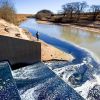 +17 +1
+17 +1Why are rivers turning blue in Africa?
Fast fashion is ‘killing’ Africa’s rivers by polluting them with chemicals and dyes.
-
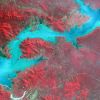 +14 +1
+14 +1Study shows dire impacts downstream of Nile River dam
Rapid filling of a giant dam at the headwaters of the Nile River—the world's biggest waterway that supports millions of people—could reduce water supplies to downstream Egypt by more than one-third, new USC research shows.
-
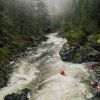 +14 +1
+14 +1Why the first river in Canada to become a legal person signals a boon for Indigenous Rights | The Narwhal
The Muteshekau Shipu (Magpie River) in Québec will enjoy new protections as Canada joins a global movement to recognize both Indigenous law and the rights of nature
-
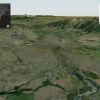 +8 +1
+8 +1River Runner
Watch the path of a raindrop from anywhere in the contiguous United States
-
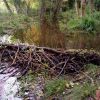 +4 +1
+4 +1Beavers build first Exmoor dam in 400 years
The National Trust says the dam in Somerset "might look modest, but it is incredibly special".
-
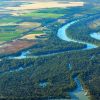 +3 +1
+3 +1Australia has an ugly legacy of denying water rights to Aboriginal people. Not much has changed
Across the NSW portion of the Murray-Darling Basin, Aboriginal people make up almost 10% of the population. Yet they hold a mere 0.2% of all available surface water.
-
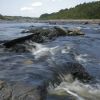 +20 +1
+20 +1When dams cause more problems than they solve, removing them can pay off for people and nature
Across the United States, dams generate hydroelectric power, store water for drinking and irrigation, control flooding and create recreational opportunities such as slack-water boating and waterskiing.
-
 +3 +1
+3 +1Beavers cut flooding and pollution and boost wildlife populations
Five-year study of animals in Devon finds measurable benefits to wildlife and people
-
 +19 +1
+19 +1Living tree bridges in India stand strong for hundreds of years
The entwined roots of Indian rubber trees form bridges that—unlike steel structures—grow more durable with time.
-
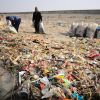 +3 +1
+3 +1China dumps 200 million cubic metres of waste in sea after drive to stop throwing it in rivers
More than 200 million cubic metres of waste found floating off Chinese shores last year
-
 +24 +1
+24 +1This Trash Eating Boat Can Clean Up The Rivers
Today we are facing so many environmental problems out of which one is water pollution. We are throwing away all the garbage directly into our lakes, rivers and oceans. We just can’t imagine how much waste is already present in our water bodies and therefore in the end we have to rely on new technologies and devices which can help us in cleaning our lakes and oceans.
-
 +19 +1
+19 +1Glacial rivers absorb carbon faster than rainforests, scientists find
‘Total surprise’ discovery overturns conventional understanding of rivers
-
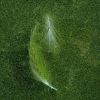 +13 +1
+13 +1The Frightening Spread of Toxic Algae
Climate change is accelerating the spread of lethal algal blooms in American waterways—with devastating results for humans and animals alike.
-
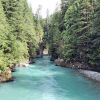 +9 +1
+9 +1‘It’s All Driven by Salmon:’ The Push to Protect the Pitt River
The Coquitlam area river and its tributaries are under attack. But advocates are working to repair the damage.
-
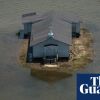 +4 +1
+4 +1This US heartland has been flooded for five months. Does anyone care?
About half a million acres of land in the rural Yazoo backwater area in Missisippi is underwater, a devastating blow for a poor region where agriculture is the economy’s lifeblood
Submit a link
Start a discussion
















